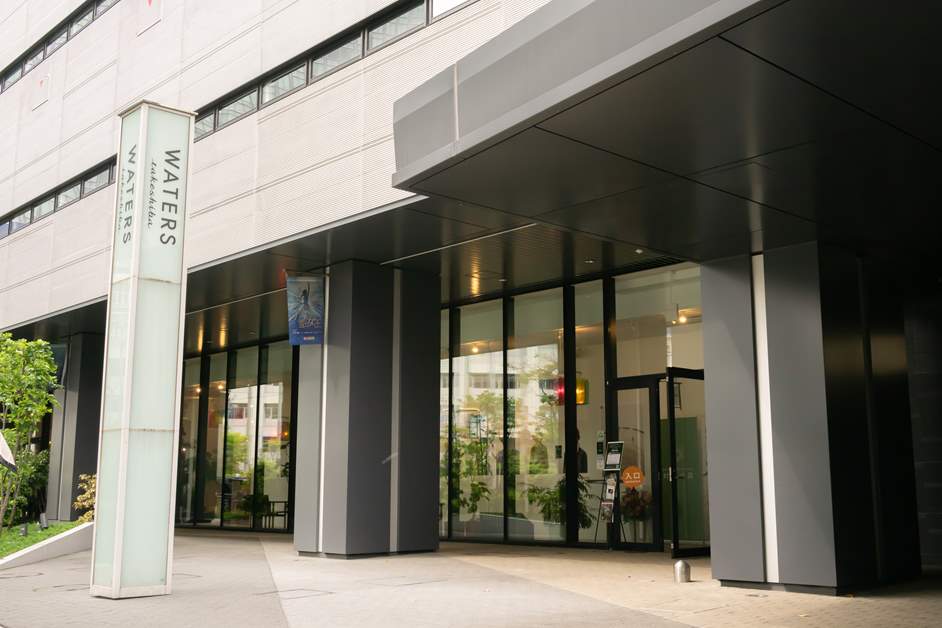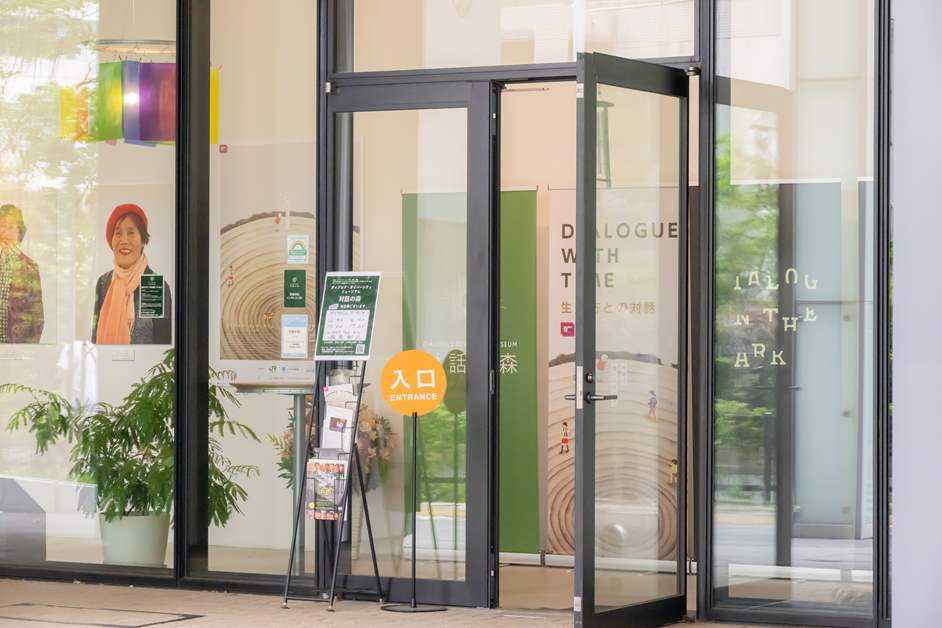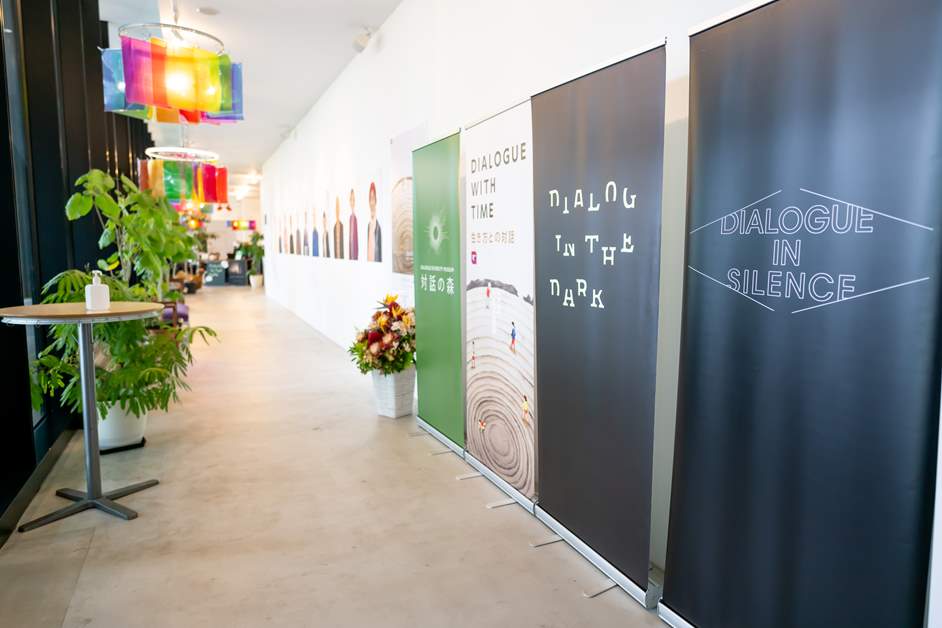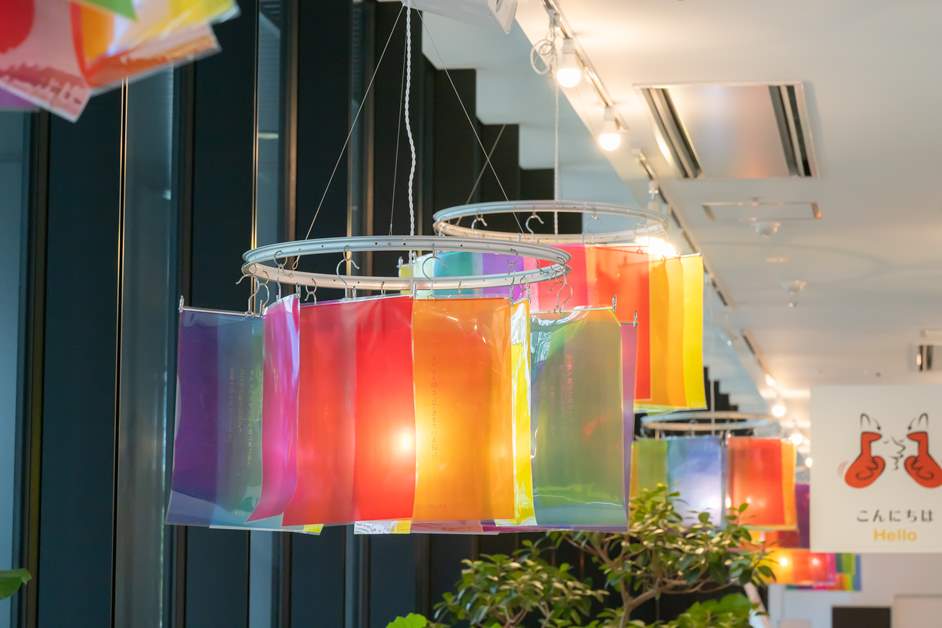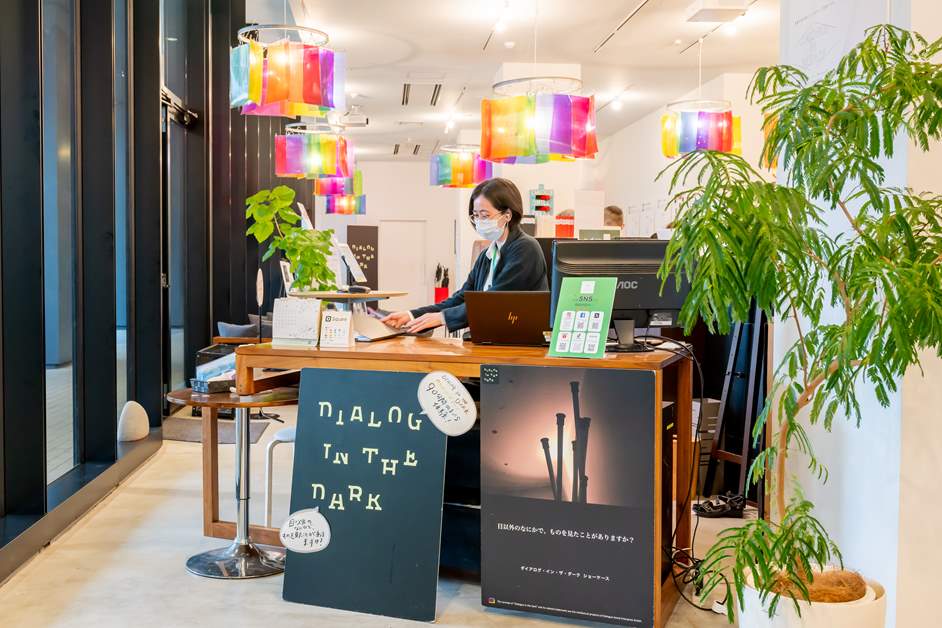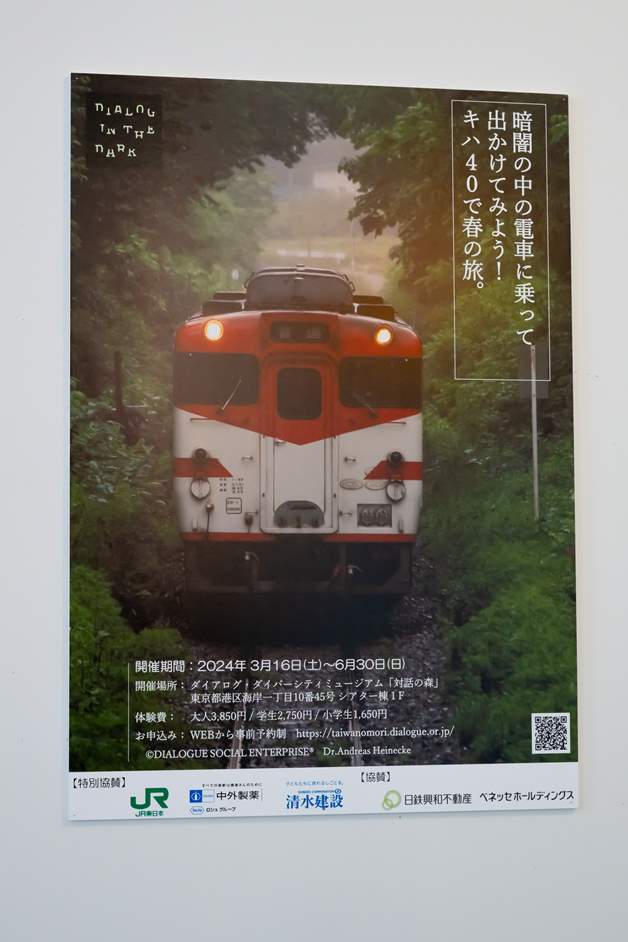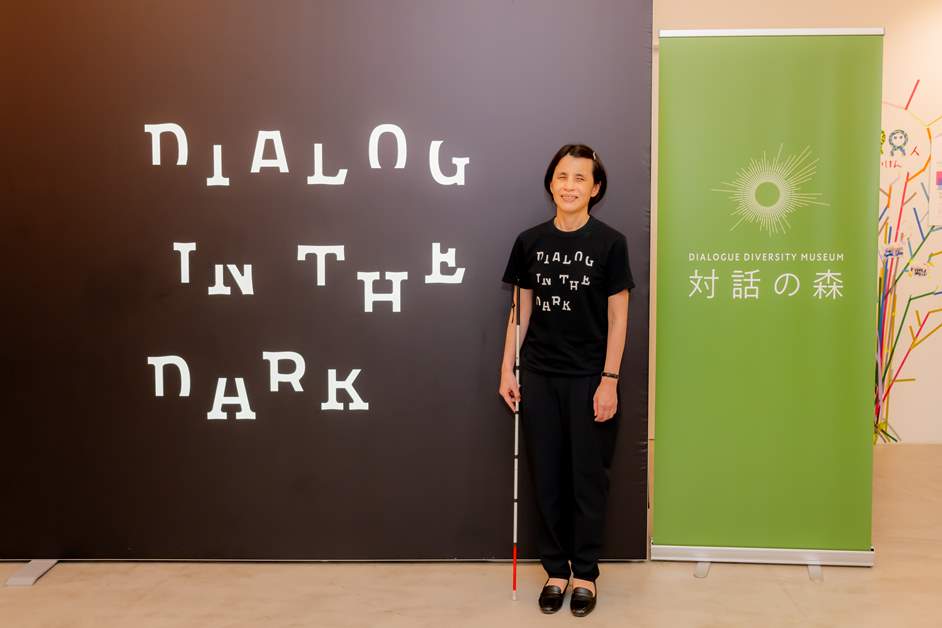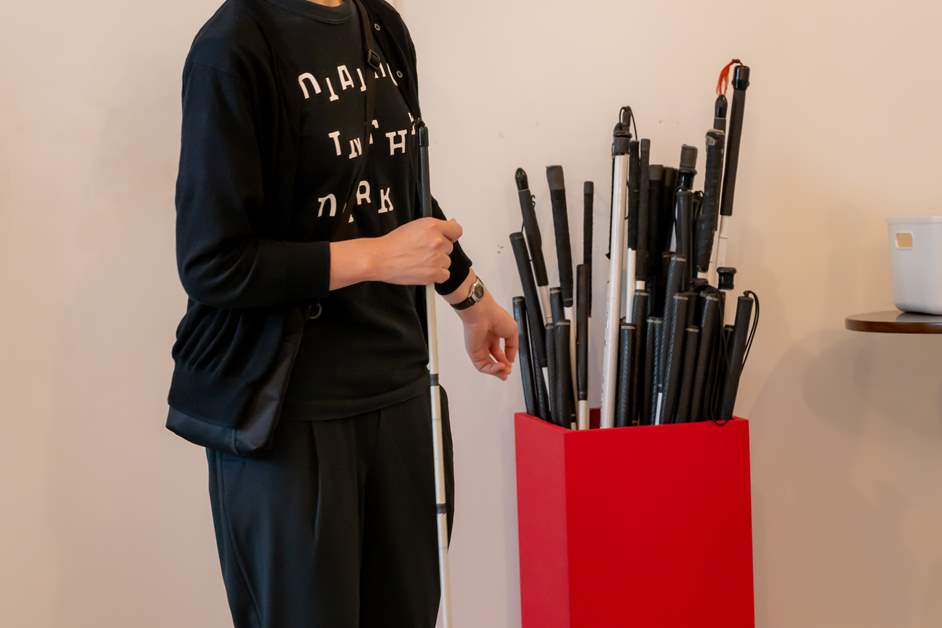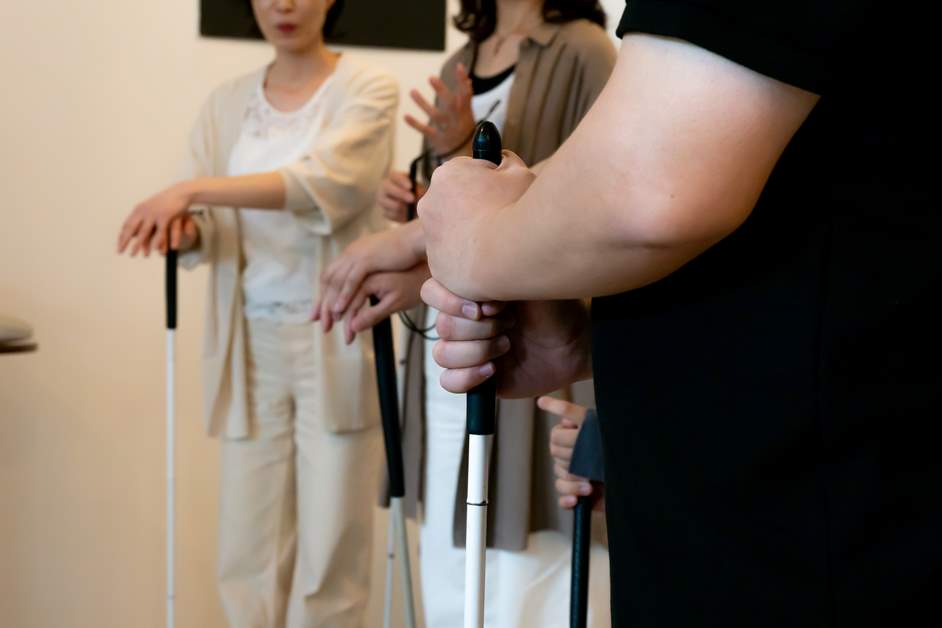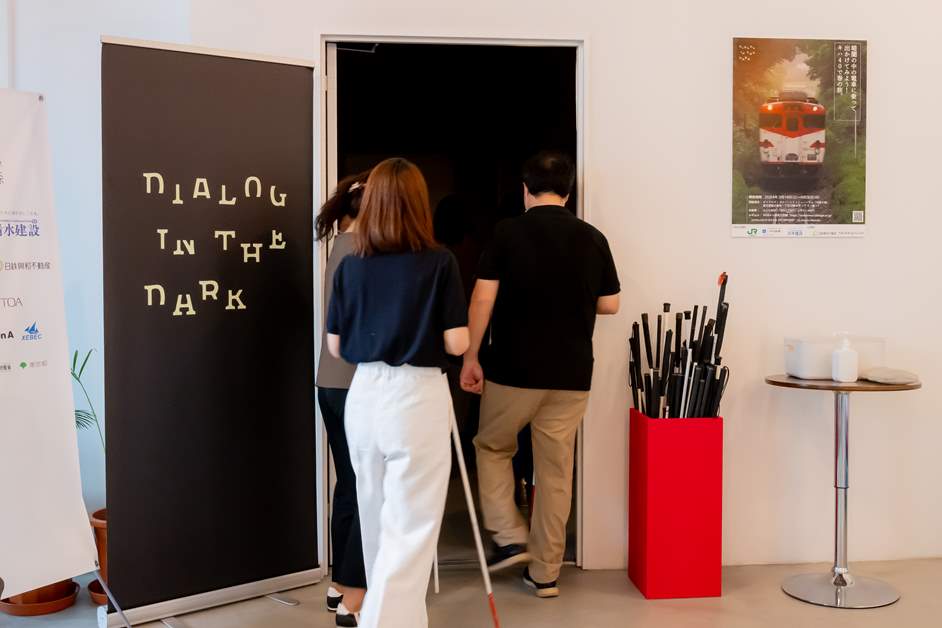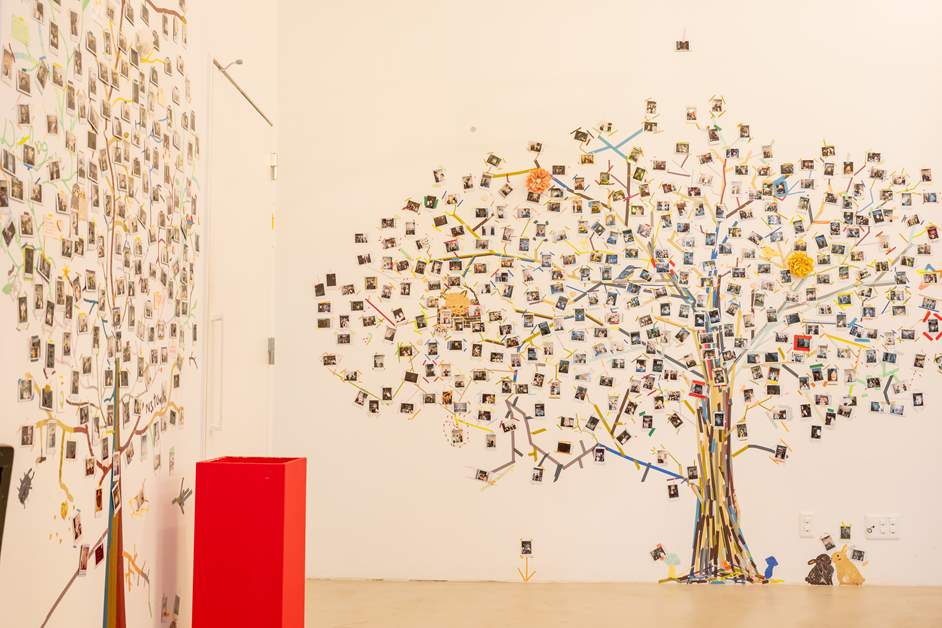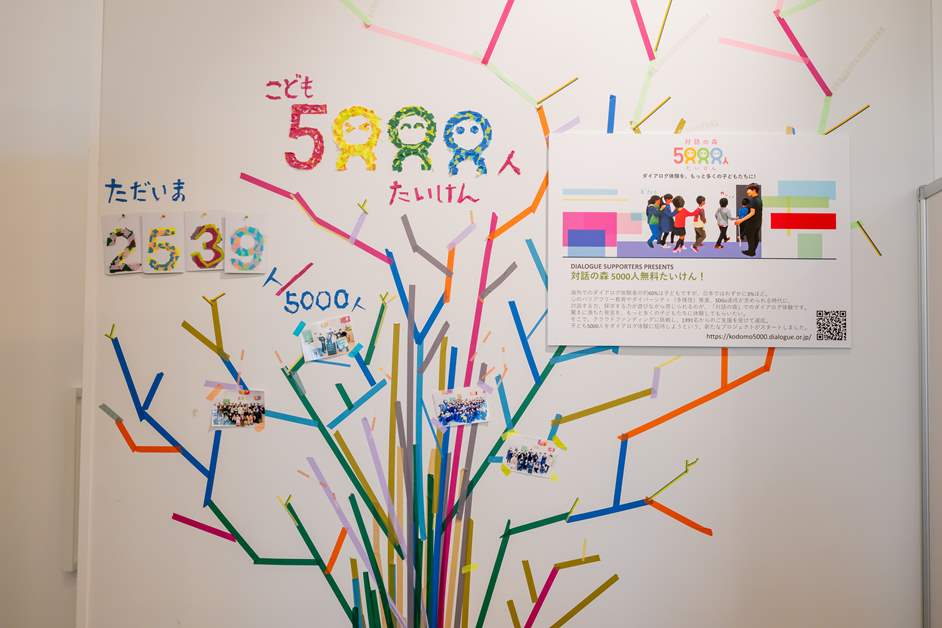Experience “Dialogue in the Dark”! Shrouded in Darkness, the KiHa 40 Train Departs
Dialogue in the Dark (DID) is entertainment in complete darkness” in which visually impaired guides lead participants through an adventure in the dark. To date, DID has been held in more than 47 countries around the globe, at which more than 9 million participants have partaken in the experience. The concept was founded in 1988 by German philosophy scholar Dr. Andreas Heinecke as a way to utilize the experience of darkness to demonstrate the importance of connections and dialogue between people, as well as the richness of the five senses. The concept in Japan started in 1999 as a short-term event, and a total of 240,000 participants have experienced it so far. In August 2020, the Dialogue Diversity Museum/Forest of Dialogue (Taiwa no Mori) (R) opened as a permanent facility at the Atre Takeshiba Theater Building (Kaigan 1-chome, Minato-ku). The writer of this article took the opportunity to visit the museum and participate in the DID program being held through June 30, 2024, entitled “Spring Travels on the KiHa 40/Experience a Train Ride Journey in the Dark!” Not an inch ahead was visible in this indeed “dark world.
DID and DWT Taking Place at the Takeshiba Museum
In a corner of the WATERS Takeshiba complex sits the Atre Takeshiba Theater Building, located a three-minute walk from Takeshiba Station on the Yurikamome Line and an approximate six-minute walk from Hamamatsucho Station on the JR and Tokyo Monorail lines. The museum occupies the first floor of the theater building.
The doors on the street side of the building are for direct entrance into the museum. Please note that the museum cannot be accessed from inside Atre.
In addition to DID, the museum is also hosting a Dialogue With Time (DWT) program where participants engage in dialogue about life and living with trained seniors of 70 years or older who lead the activity as attendants (guides). The hall walls were decorated with photographs of the attendants.
Hanging from the ceiling are colorful sheets with the writing of participants and supporters. Each sheet contains a personal answer to the question, “What does dialogue mean to you?” The colorful sheets, overlapping with each other, portray the changes of heart that occur through dialogue. Such a layout embodies the museum’s concept.
Since JR East is the museum's special sponsor, an actual train passenger seat is placed in the hall.
Fifteen minutes before the start time, participants finish checking in at reception and place bags and other items in a locker. Cellphones, watches, and any other item that gives off light should be placed in the locker as the program takes place in the dark.
DID requires a reservation to participate. To make a reservation, visit the official website to purchase a ticket in advance. Children who are first-grade elementary students and older can participate if accompanied by a guardian. For safety reasons, prior notice is required for those who are pregnant, those who are not in good physical condition, and those who have difficulty communicating in Japanese. Please carefully review the precautions listed on the official website before your visit. In addition to the exhibitions at the Takeshiba museum, a program geared toward adults, titled “Inner Beauty, Harmonizing Darkness,” is being hosted at Jingugaien.
Step Forth Into Utter Darkness
The “Spring Travels on the KiHa 40/Experience a Train Ride Journey in the Dark!” program currently being hosted places participants on a train, a form of transportation that can be described as a microcosm of society. In this program, participants who have never met before communicate in various ways with each other to help locate empty seats and even offer their own. In the darkness sits an actual KiHa 40 train car brought in from the JR East Akita Train Center. Participants sit on the rather nostalgic box seats and embark on a journey.
The program’s start time finally rolls around. In DID, participants are generally placed into groups of eight, with each group guided by one attendant. Each of the roughly 20 visually impaired attendants is a specially trained darkness professional. The group that the writer of this article participated in was guided through the world of darkness by our attendant, Ms. Tae.
Participants first choose a white cane for guidance. These white canes are used to scan walking surface conditions and detect obstacles by gliding and tapping the tip of the cane along the surface. Many have likely seen a visually impaired person using a white cane. White canes come in various lengths, and we were advised that the cane handle should reach a height that sits somewhere between the user's belly and sternum when held straight up on its tip.
DID is open to families, friends, couples, and solo participants alike. Once the groups of eight strangers each are formed, participants head into the darkness. The “Ms. Tae Team” for this round included this article's writer and photographer, two pairs of friends, and one parent-child pair. Before entering the darkness, we received an explanation lecture from Ms. Tae.
The dark adventure starts in a dimly lit room. Slowly but surely, the small lights illuminating the room are dimmed to complete darkness, and from there, participants are reliant on their white canes and Ms. Tae's voice.
Together, participants move forward in a space so dark you cannot see anything, no matter how hard you try. Everyone calls out to each other while using their hands and white canes to navigate their surroundings. You can only tell who is where by actively calling out to each other! Meanwhile, it is as if Ms. Tae can see everything just fine as she provides support to everyone. It is truly amazing!
*This image is for illustrative purposes, but it really is this dark.
Participants form a circle in a somewhat spacious area, give self-introductions, and then play a simple game. From here, participants start addressing each other by nicknames. “Right here.” “There’s a seat here.” “I’m going to sit down here.” Whether arriving at the station building or boarding the KiHa 40 train, participants call out and help each other along the way. We learned how important it is to use your voice to communicate your position and actions with everyone else. And now we board the KiHa 40. Some things happen along the way and a number of developments take place once you reach a certain place, which you can look forward to experiencing yourself when you participate.
The journey in the dark fully leverages all the senses outside the sense of sight, and ends with its participants feeling a great sense of elation and satisfaction. It was an experience lasting 90 minutes, and by the end of it, there was a pronounced sense of unity centered around Ms. Tae. It was indeed a testament to the strength behind the communication experienced throughout the program.
Incorporation Into Corporate Training and Children’s Education
Participants proceed from the darkness toward the bright entrance. The transition gave a curious longing to remain in the darkness just a little longer, mixed with a faint but present sense of relief to be back. Finally, all participants form a circle and share their “post-game analysis.” They reflect on the experience and fill out surveys. Despite having just spent 90 minutes together, the slight feeling of awkward shyness that came with being able to see each other’s faces was most certainly not limited to the writer of this article.
Commemorative photographs of participants and attendants decorated the walls. DID has been experienced by people from all walks of life, from children to adults. More than 1,000 companies have reportedly adopted the experience into corporate training programs so far.
The museum offers a great selection of souvenirs. Popular items include tote bags, T-shirts, and handkerchiefs.
Lacquerware designed for a specific texture and feel on the hands and lips, developed through a collaboration between lacquer artisans and DID attendants, is one of several items that fit perfectly in the museum’s offerings.
Interestingly, roughly 60 percent of those who participate in DID experiences outside Japan are reportedly children. In contrast, the percentage of children among DID participants in Japan sits at just 3 percent. To improve upon this, the museum is leveraging crowdfunding to carry out a program to invite 5,000 children to the DID experience. As of May 2024, the program has resulted in the participation of 2,539 children.
The DID program is updated every season, so a new summer program will launch once the “Spring Travels on the KiHa 40” program wraps up. Be sure to check the official website for updates. Just as the name “Forest of Dialogue” (Taiwa no Mori) (R) suggests, the museum proved to truly be a place where people come and engage in dialogue, providing opportunities through the likes of DID and DWT for people of various backgrounds to come together and better understand each other. Such opportunities to hone in your senses while communicating with people you have never met are few and far between. Just what will you feel in a world of darkness? We highly recommend experiencing this for yourself at least once.
Spring Travels on the KiHa 40/Experience a Train Ride Journey in the Dark!
Place: Dialogue Diversity Museum/Forest of Dialogue (Taiwa no Mori) (R) (1-10-45, Kaigan, Minato-ku, Tokyo)
Dates: Saturday, March 16, 2024 – Sunday, June 30, 2024
*Please check the website for closed days.
Participation fee (price per person including tax): ¥3,850 for adults, ¥2,750 for junior high/high school/university/technical school/university graduate students, ¥1,650 for elementary students
Dialogue Diversity Museum/Forest of Dialogue (Taiwa no Mori) (R) website:
https://taiwanomori.dialogue.or.jp/
Dialogue in the Dark
https://did.dialogue.or.jp/
*Ticket for sale, precautions, and other information are available on this website.
Place: Dialogue Diversity Museum/Forest of Dialogue (Taiwa no Mori) (R) (1-10-45, Kaigan, Minato-ku, Tokyo)
Dates: Saturday, March 16, 2024 – Sunday, June 30, 2024
*Please check the website for closed days.
Participation fee (price per person including tax): ¥3,850 for adults, ¥2,750 for junior high/high school/university/technical school/university graduate students, ¥1,650 for elementary students
Dialogue Diversity Museum/Forest of Dialogue (Taiwa no Mori) (R) website:
https://taiwanomori.dialogue.or.jp/
Dialogue in the Dark
https://did.dialogue.or.jp/
*Ticket for sale, precautions, and other information are available on this website.





